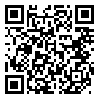BibTeX | RIS | EndNote | Medlars | ProCite | Reference Manager | RefWorks
Send citation to:
URL: http://jdisabilstud.org/article-1-2587-en.html
2- Assistant Professor, Department of Psychology, Isfahan (Khorasgan) Branch, Islamic Azad University, Isfahan, Iran
3- Professor, Department of Psychology, Isfahan (Khorasgan) Branch, Islamic Azad University, Isfahan, Iran
Abstract
Background & Objectives: Satisfactory marriage is one of the most important factors in couples' mental health, but if married life does not provide favorable conditions to meet the psychological needs of couples, it will have negative effects. Mental disorders, depression, and suicide are some of the consequences of this problem. To solve these problems and issues, narrative therapy can be used. Narrative therapy helps people to facilitate the separation between the person and the problem by externalizing the problem as a primary process, and by relying on the abilities, beliefs and competencies of the people, it can reduce the influence of the problems and make the problems flexible and solvable. The present study investigated the effectiveness of narrative therapy on the quality of marital life, and the dimensions of attachment of disabled couples referring to counseling centers in Isfahan.
Methods: The present study is a one–case experimental design that was conducted in 2019. The statistical population of the study was all disabled couples referring to psychology and counseling centers and clinics in Isfahan City, Iran. Of them, three couples were selected according to the inclusion and exclusion criteria by accessible and purposeful sampling. After initial sampling, three couples were placed in the group of narrative therapy. The inclusion criteria were as follows: being in marital turmoil based on the interview and also obtaining a score lower than 101 on the Marital Adjustment Scale (MAS), lacking a history of mental disorder based on the clinical interview, having at least a diploma, being at least 20 and at most 50 years old, passing at least 1 year of cohabitation, having this marriage is their first marriage, living together in the same house while conducting research, and not using concomitant psychological therapies. The exclusion criteria include failure to perform the assignments presented in the sessions, unwillingness to cooperate, history of substance abuse or dependence on the substance, use of psychiatric medication prescribed, and absence of more than two sessions. It should be noted to determine the inclusion and exclusion criteria, we used the structured clinical interview, Millon Clinical Multiaxial Inventory–III, and diagnostic interview of clinical psychologist. The subjects were selected from couples who were referred to counseling centers and psychological services in Isfahan and had marital problems. After a diagnostic interview and identifying the couples who meet the inclusion criteria, the couples were placed in the narrative therapy group. For gathering data Marital Quality of Life (Relationships) Questionnaire (MQL) (Fletcher et al., 2000) and the Revised Adult Attachment Scale (RAAS) (Collins & Read, 1990) were used. To perform the treatment methods, the first couple in the group entered the treatment plan, and at the stage of the baseline (for two weeks), all research tools were performed on them. The treatment was then presented for 12 weekly sessions for the narrative therapy group. To control the unwanted and possible interfering variables and according to the principles of multiple baseline designs in the second session of the first couple, the second couple in both groups entered the treatment plan and so on in the third session of the first couple and the second session of the second couple, the treatment plan was started for the third couple in both groups. All questionnaires were completed in sessions 3, 6, and 8 and immediately after completing treatment. For follow–up, subjects were re–evaluated two months after the treatment. The reliable change index (RCI) and recovery percentage were used to analyze the research data and evaluate the effectiveness of narrative therapy.
Results: Based on the results, in the quality of married life variable, the reliable change index (RCI) in the second (2.19) and third (4.04) couples was statistically significant, which showed the effectiveness of the treatment. For the secure attachment style variable, the RCI in the second couple (2.18) was statistically significant and the treatment was effective only in the second couple. For the ambivalent/anxious style variable, considering that the RCI values in the first (0.51), second (0.17), and third (0.17) couples were less than Z=1.96, the treatment has not been effective for this variable.
Conclusion: Narrative therapy improves the quality of married life and the secure attachment style of some couples; Therefore, this approach can be used to improve interpersonal and marital issues and reduce the rate of divorce in society.
| Rights and permissions | |
 |
This work is licensed under a Creative Commons Attribution-NonCommercial 4.0 International License. |




